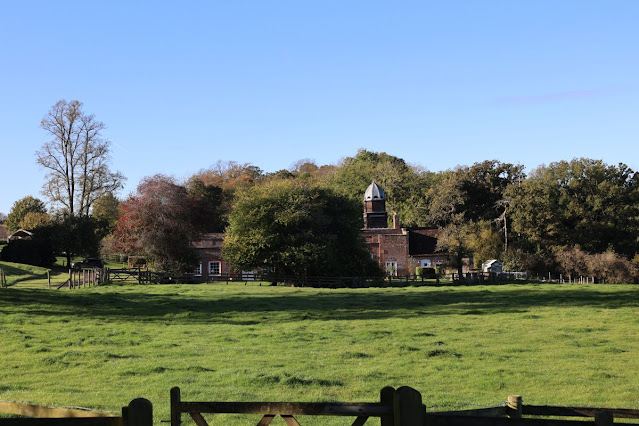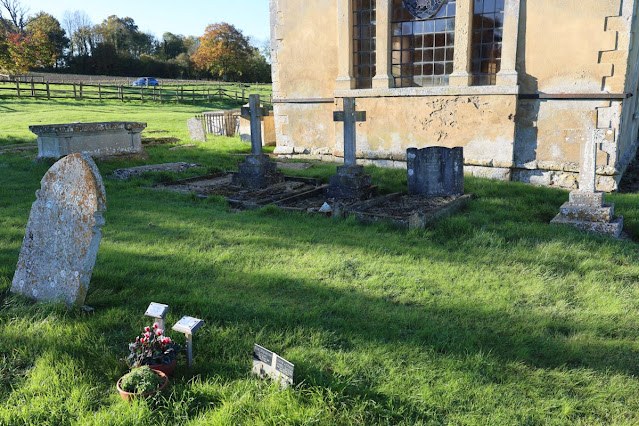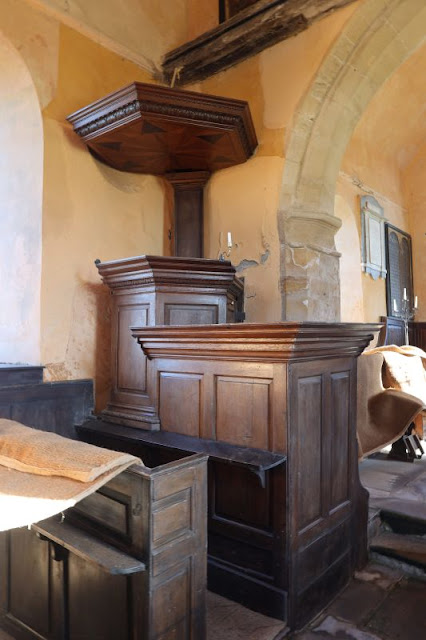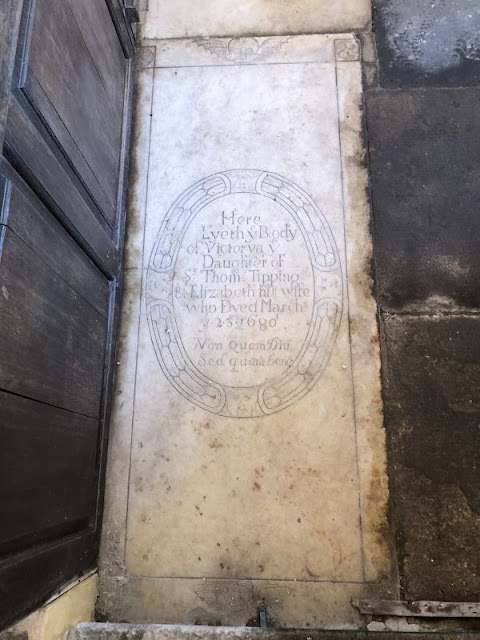This week the church Explorer returns to St Andrews Wheatfield. The last time I was here was in 2018 when I discovered the church was locked and unlikely to reopen for a while because the church had been broken into and the 17th century altar and a chair stolen. After being told that Tipping family were buried here which and I was after photos for a lady who contacted me I made enquiries into gaining access which was arranged for one day in November. I went along on a beautiful Tuesday morning to view the church. The photos are taken with both mu iPhone and camera. I have pasted the history for Wikipedia for some background :-
"Wheatfield had a church with a rector by 1202, although a document from 1240 or 1241 still refers to it as a chapel. The oldest features of the Church of England parish church of Saint Andrew are the chancel arch and a doorway on the south side of the nave, both of which are 14th century. There is a blocked Perpendicular Gothic window on the north side of the chancel. The king post roof is probably 17th century. John Rudge had St. Andrew's remodelled early in the 18th century, and this Georgian work obscures most Medieval features except those above. The church retains its Georgian features and fittings, including a Venetian east window and 18th century box pews. The wooden communion table is a high-quality carved piece from about 1745, that Sherwood and Pevsner considered similar to the work of John Vardy.
St. Andrew's contains several 17th and 18th century monuments to members of the successive manorial families, including one to John Rudge made in 1739 by the Flemish sculptor Peter Scheemakers. The chancel includes 14th century stained glass showing the arms of the Whitfield family and the west window of the nave has 18th century glass showing the arms of the Rudge, Letten and other families The Venetian east window of the chancel has late Victorian stained glass by Morris & Co. St. Adrew's has no tower; only a bell-turret. It has one bell, which was cast in 1636 by Ellis I Knight of Reading, Berkshire. The church has no running water or electricity; its only lighting is from candles mounted on 18th century brackets. the church is a Grade I listed building. In 1729, John Rudge presented a set of church plate to St. Andrew's. In Lord Charles Spencer's time the set was kept in Wheatfield Park for security, but this led to its being destroyed in the 1814 fire. The present church plate is a replacement set that Lord Charles Spencer presented in 1814. Past rectors include Henry Taylor, who was incumbent 1737–46. St. Andrew's is now part of an extensive benefice with nine other parishes including those of Thame and Lewknor."
In the chancel you find the altar table a replacement for the one stolen
The east window with a stained glass insert of Christ
Looking back the other way through the chancel arch
On the left of the arch is the pulpit with a sounding board above to the right of that an enclosed lectern
These were taken with my iPhone
Most of them are easy to read
Frances Tipping
This one belongs to George Tipping
Victoria Tipping
Mary who was Sir Thomas daughter
Hard to read from the photo but belongs to Dame Elizabeth Tipping wife of Sir Thomas. The one grave I wanted to find was that of Sir William Tipping but it was not with these. He may be buried in the church under one of the pews of in the chancel but I could not see him
Loads of memorials on the walls
On the east wall along with scripture plaques
and the Lords Prayer
The all vary in size
Because they are white the inscriptions hard to read
This is one of the tipping family
This one to John Rudge
Another member of the Rudge family
The funerary hatchment I think belongs to Charles Spencer the last owner of the manor
Royal coat of arms
The coat of arms stained glass
The Font which looks typical 17th century
The east window
The inscription on the window
You might note the candles, that is because there are no electric lights in the place. A beautiful church which is in need of some care and attention. The churchwarden told me that St Andrews Church was in need of help and there is a fund to help do this, if you go to the link you can find a just giving link if you wish to help out. The church is one of those rare gems you find that is worth looking after.
Till Next time Have a peaceful weekend














































6 comments:
A very appealing church.
I've only ever encountered one other church with pink walls, and that was Shelland in Suffolk. I read that it was the height of fashion during the Georgian period, which would tie in nicely with the George II coat of arms. The Victorians decided that pink walls were not to their taste, so they only remain in a few isolated churches. I suspect that this little church has been largely neglected since its heyday.
Glad you got to go inside. How nice that the sun was shining so brightly!
Much more that I though when I first saw it
Didi not realised that till you mentioned it. The church sits alone in a field with only a building you saw at the beginning nearby
I was as well, never thought I would be able when I first came across the church
Post a Comment